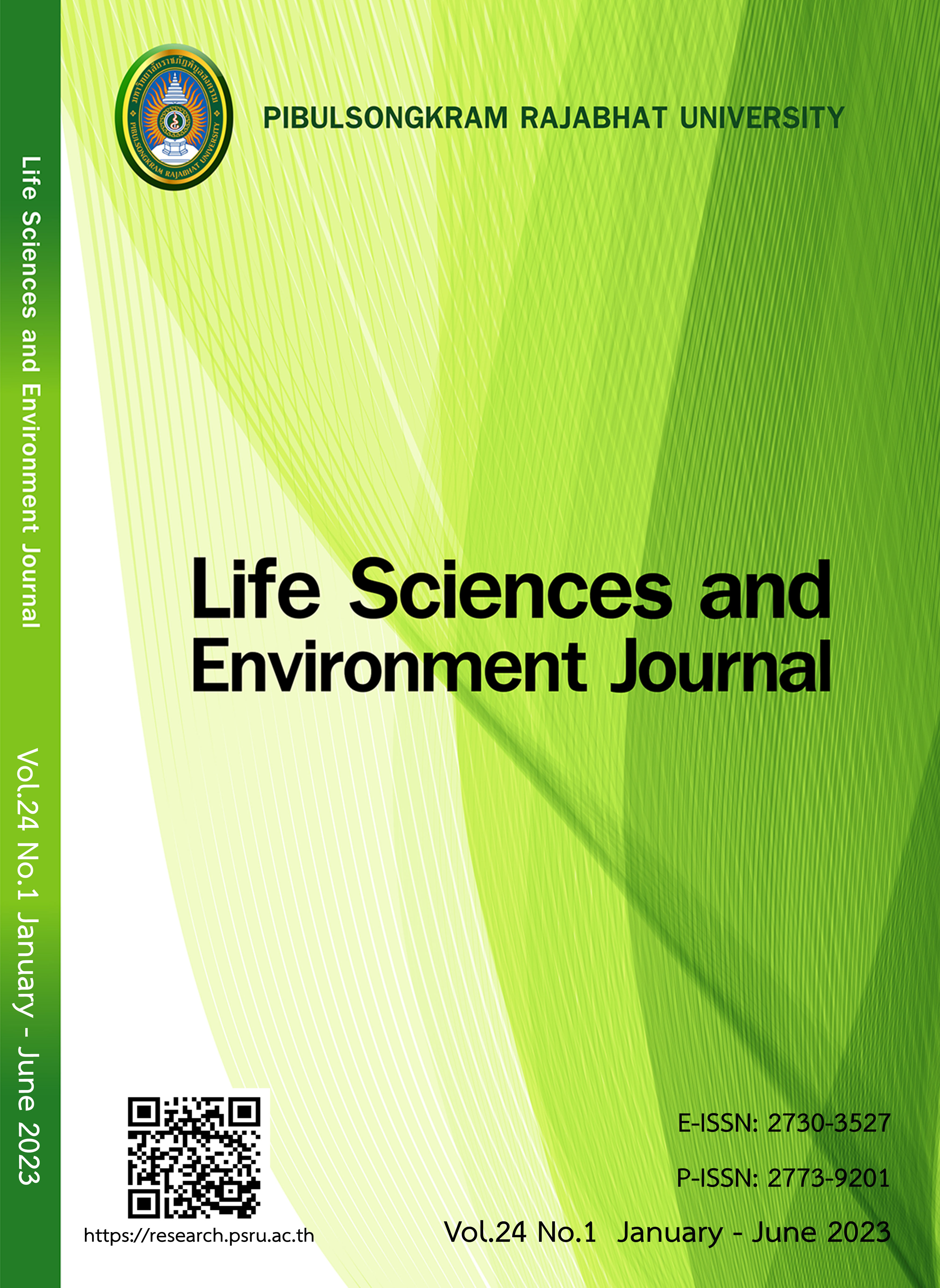AN ANALYSIS OF FLOODING DUE TO THE KAENG KRACHAN DAM FAILURES
DOI:
https://doi.org/10.14456/lsej.2023.12Keywords:
Kaeng Krachan dam, Dam failures, HEC-RAS modelAbstract
This study aimed to analyze the occurrence of flooding caused by the Kaeng Krachan dam failures using HEC-RAS model. The initial water level at the normal storage level at +99.00 m (MSL) and the probable maximum flood were selected as the inflow of the reservoir which determines. For the case study of the failure characteristics of the dam, it is divided into two types such as overtopping and piping failures. The results of the study showed that the calibration and verification of the HEC-RAS model in from 2018 to 2021 passed the criteria, comprised of the r value was between 0.95-0.99 and the RMSE value was between 24-43 m3/s. The Manning's n values of the Phetchaburi River both in the river and floodplain were 0.033-0.050 and 0.500, respectively. While, the most probable case of dam failure is the case of the overtopping of the second dam of the low hill, which will cause a maximum flow rate of 6,650 m3/s, flooding area of 818 km2 or approximately 511,250 rai, the flood period is about 3 days, The affected areas were in the Lower Phetchaburi river basin, namely Kaeng Krachan district, Ban Lat district, Tha Yang district, Ban Laem district, Cha-Am district, Khao Yoi district, Nong Ya Plong district and Muang Phetchaburi district with a total of 485 villages, 78 sub-districts, 8 districts, 1 municipality. The travel time of the water from Kaeng Krachan dam to Petchaburi town, it takes about 16 hours. The results of the study suggest evacuation points in order to be able to prepare plans for the emergency flood situation that will occur. It had a total of 13 points and could support 200 to 500 victims.
References
Balaji B, Kumar S. Dam break analysis of Kalyani dam using HEC-RAS. International Journal of Civil Engineering and Technology (IJCIET) 2018;9(5):372–380.
Bharath A, Shivapur AV, Hiremath CG, Maddamsetty R. Dam break analysis using Hec-RAS and HEC-GeoRAS: A case study of Hidkal dam, Karnataka state, India. Environmental Challenges 2021;5:100401.
Chaivijarn C. Hydraulic engineering. Bangkok: Chulalongkorn University Press; 2013.
Department of Disaster Prevention and Mitigation. The flood situation in Phetchaburi province (Report). Bangkok; 2018.
Intaboot N, Taesombat W. Longitudinal salinity intrusion and dispersion along the Thachin River due to sea level rise. Journal of Science and Technology 2014;3(2):71-88.
Leewatchanakul K. Hydraulics. Bangkok: SPEC Publisher; 2015. Rangsit University, 2021.
Leoul A, Kassahun N. Dam breach analysis using HEC-RAS and HEC-GeoRAS: The case of Kesem Kebena dam. Open Journal of Modern Hydrology 2019;9(4):113-142.
Sharma P, Mujumdar S. Dam break analysis using HEC-RAS and HEC-GeoRAS - A case study of Ajwa reservoir. Journal of Water Resources and Ocean Science 2016;5(6):108-113.
Thepprasit C, Cherdchanpipat N, Puttrawutichai S, Somboon T, Sopondirekrat V. Reservoir management for flood protection (Final Report). Bangkok; 2020.
US Army Corps of Engineers. HEC-RAS river analysis system (User’s manual). United State; 2020.
Vanichsan D, Taesombat W. An analysis on discharge carrying capacity of Lam Pachi River by MIKE11 model. Ladkrabang Engineering Journal 2017;34(1):41-48.
Yingyong P, Taesombat W. Dam break simulation of Kaeng Krachan dam by HEC-RAS model. In: Institute of Engineering, Suranaree University of Technology. Proceeding of the TSAE International Conference 21st. Nakhon Ratchasima; 2020.
Downloads
Published
How to Cite
Issue
Section
License
Copyright (c) 2023 Life Sciences and Environment Journal

This work is licensed under a Creative Commons Attribution-NonCommercial-NoDerivatives 4.0 International License.
Each article is copyrighted © by its author(s) and is published under license from the author(s).










